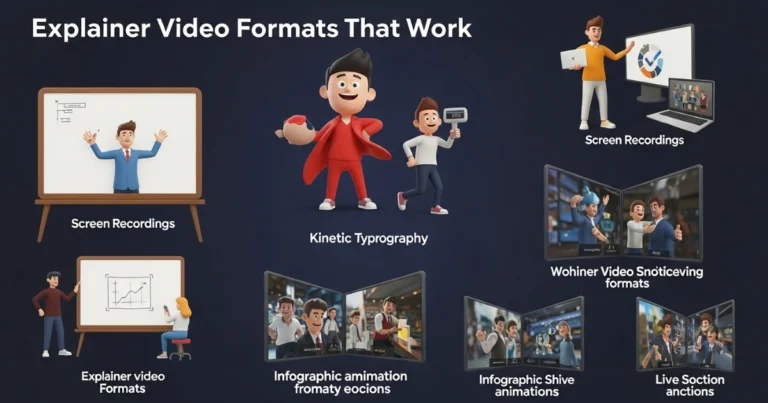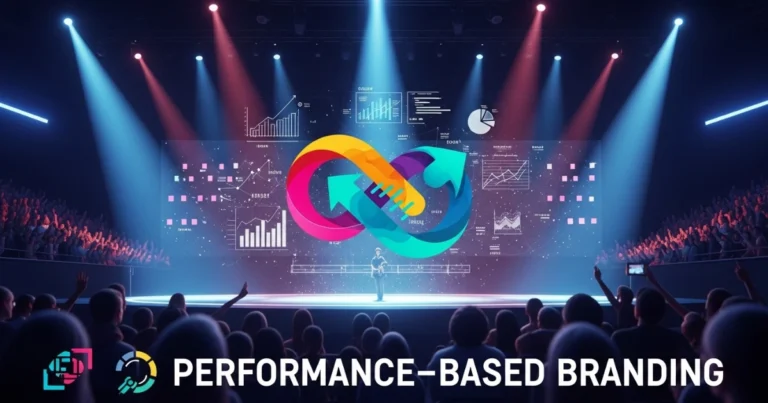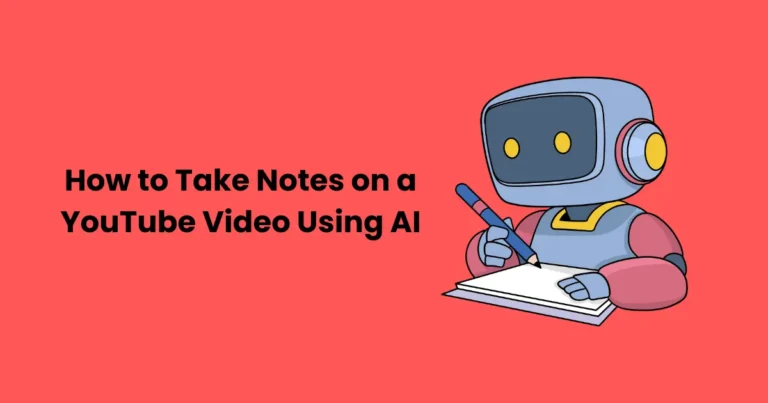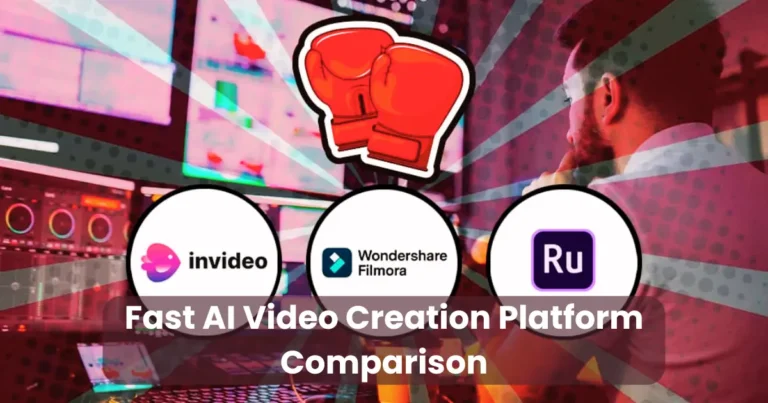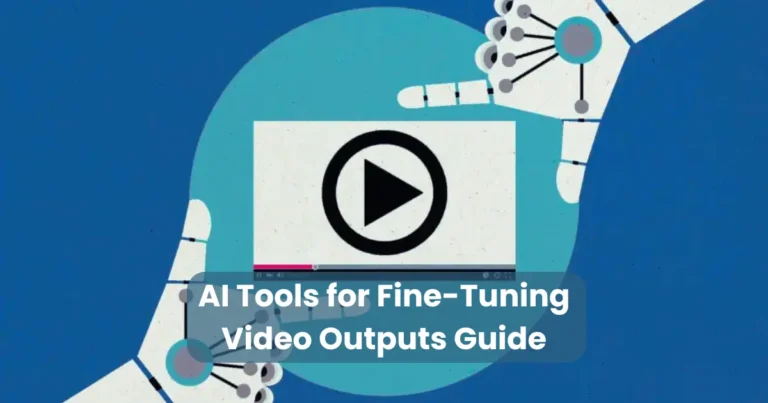Choosing the Right AI Video Platform for Informational Content
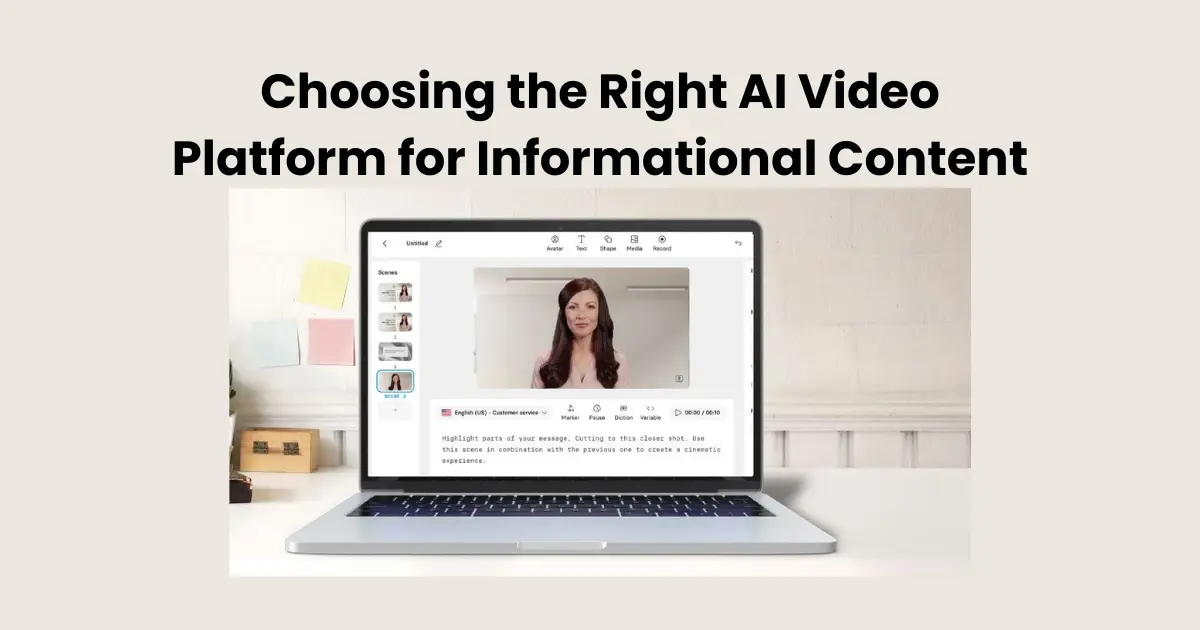
Contents
- 1 Why AI Video Platforms Are Game-Changers for Informational Content
- 2 Key Features to Look for in an AI Video Platform
- 3 Top AI Video Platforms for Informational Content
- 4 Comparing AI Video Platforms: A Feature Matrix
- 5 Common Mistakes to Avoid When Choosing a Platform
- 6 Best Use Cases for Informational AI Videos
In today’s fast-paced digital landscape, choosing the right AI video platform for informational content is more critical than ever. As audiences increasingly prefer video over text, content creators, educators, and marketers must adapt by using smart, scalable tools. AI video platforms offer a powerful way to transform static information into dynamic, engaging visual experiences—without the need for expensive production teams.
These platforms not only streamline the content creation process but also enhance reach, consistency, and accessibility. Whether you’re creating training modules, explainer videos, or digital lessons, selecting the best AI tool can significantly boost your message’s clarity and impact. In this article, we’ll explore how to evaluate platforms, what features truly matter, and how to avoid common mistakes—so you can make a confident, informed decision.
Why AI Video Platforms Are Game-Changers for Informational Content
AI video platforms are revolutionizing the way we create and deliver information. Traditional video production can be expensive, time-consuming, and resource-heavy. In contrast, AI-powered platforms automate much of the process, allowing you to produce high-quality videos in a fraction of the time.
One of the biggest advantages of choosing the right AI video platform for informational content is speed. With AI handling scripting, voiceovers, visuals, and even avatars, you can go from idea to publish-ready video within minutes. This rapid turnaround is especially valuable for businesses and educators who regularly update content or respond to trending topics.
Another game-changing benefit is scalability. AI platforms enable creators to repurpose blogs, whitepapers, and presentations into engaging video formats that are more digestible and shareable. Whether you’re targeting social media audiences or internal teams, AI tools make it easy to maintain consistency across multiple formats.
Furthermore, these platforms often support multiple languages and accessibility options, allowing you to reach diverse audiences across the globe. Features like subtitles, voice cloning, and automated translations ensure your content remains inclusive and effective.
In short, by leveraging AI video platforms, you can simplify production, extend your content’s lifespan, and connect with audiences more effectively—making them essential tools for modern informational strategies.
Key Features to Look for in an AI Video Platform
When it comes to choosing the right AI video platform for informational content, knowing what to look for can make or break your content strategy. Not all platforms offer the same capabilities, and selecting the right one means aligning its features with your specific goals. Below are the essential features to consider before making your decision.

1. Text-to-Video Capabilities
The heart of any AI video platform lies in its ability to convert written content into compelling videos. A strong text-to-video engine analyzes your script and automatically matches it with relevant visuals, animations, and transitions. This is especially valuable for educators and marketers who regularly repurpose written materials like blog posts, training guides, and reports.
2. Customizable Avatars and AI Voices
Personalization adds authenticity. Look for platforms that offer diverse avatars and voice options—especially if you’re creating content for different demographics or markets. Platforms like Synthesia even allow you to create a custom avatar or use real-time voice cloning to maintain a human touch in automated videos.
3. Language Support and Accessibility Features
Global reach requires global support. Make sure the platform supports multiple languages, automatic subtitles, and closed captions. These features are crucial for making your informational content accessible to a broader, more inclusive audience.
4. Built-In Video Editing Tools
Even the best AI outputs need tweaking. An ideal platform should provide built-in video editors that allow you to adjust timing, rearrange scenes, change layouts, and insert custom elements like logos or lower-thirds. Flexibility is key when adapting content for different channels such as YouTube, LinkedIn, or internal LMS platforms.
5. Templates and Branding Tools
Efficiency matters when scaling production. Choose a platform that offers customizable templates, brand color palettes, font control, and logo insertion. These features ensure your videos remain consistent with your brand identity without requiring manual editing every time.
6. Collaboration and Export Options
If you’re working with a team, collaborative features like shared workspaces and version history are crucial. Also, confirm that the platform allows high-quality export options in various formats to suit your publishing needs.
By focusing on these features, you can ensure you’re choosing the right AI video platform for informational content that’s not only efficient but also versatile and aligned with your objectives. The right combination of automation and customization can elevate your message and help you stand out in today’s crowded digital space.
Top AI Video Platforms for Informational Content
Now that you understand what to look for, let’s explore some of the top AI video platforms for informational content. Each of these tools brings unique strengths, so selecting the right one depends on your specific needs, budget, and workflow. As you move forward with choosing the right AI video platform for informational content, consider these leading options:

1. Synthesia
Best for: Professional training videos and global teams
Synthesia allows users to create AI-generated videos with lifelike avatars and voiceovers in over 120 languages. It’s ideal for training, internal communications, and product explainers. With intuitive text-to-video features and corporate branding support, it’s a top choice for enterprises.
2. Pictory
Best for: Turning blogs and scripts into engaging videos
Pictory uses AI to convert long-form content like articles and whitepapers into short, shareable video summaries. Its strength lies in automatic visual selection, voiceovers, and captions, making it perfect for content marketers and educators.
3. Lumen5
Best for: Social media-ready informational content
Lumen5 excels in transforming blog posts into vibrant, animated videos using templates, music, and branding tools. It’s especially useful for teams focusing on outreach via social platforms like LinkedIn, Instagram, and Facebook.
4. Elai.io
Best for: AI avatars and localization
Elai.io offers high-quality AI avatars with realistic voiceovers. It supports PowerPoint-to-video conversion and multiple export formats. Its multilingual capability makes it a powerful tool for educational institutions and international brands.
5. Animoto
Best for: Drag-and-drop simplicity
If you’re new to AI video tools, Animoto is a user-friendly option that provides drag-and-drop editing, music libraries, and ready-made templates. While it’s not fully AI-powered like others, it’s excellent for small teams creating quick informational content.
By evaluating these platforms, you’ll be better positioned in choosing the right AI video platform for informational content that fits your goals. Whether you prioritize speed, customization, or multilingual support, these tools offer robust features to amplify your message and streamline production.
Comparing AI Video Platforms: A Feature Matrix
To simplify the process of choosing the right AI video platform for informational content, here’s a detailed feature matrix comparing key capabilities across five of the most popular platforms:
| Platform | Text-to-Video | AI Avatars | Multilingual Support | Custom Branding | Templates | Collaboration Tools | Best For |
| Synthesia | ✅ Excellent | ✅ Realistic & Customizable | ✅ 120+ Languages | ✅ Yes | ✅ Yes | ✅ Team Workspace | Corporate training, eLearning |
| Pictory | ✅ Strong | ❌ None | ✅ Basic voiceover in multiple languages | ✅ Yes | ✅ Yes | ✅ Limited | Repurposing blogs, content marketing |
| Lumen5 | ✅ Strong | ❌ None | ✅ Text support only | ✅ Yes | ✅ Extensive | ✅ Team Collaboration | Social media content |
| Elai.io | ✅ Excellent | ✅ High-Quality Avatars | ✅ 65+ Languages | ✅ Yes | ✅ Yes | ✅ Team Access | Product demos, education |
| Animoto | ✅ Basic | ❌ None | ❌ Not supported | ✅ Limited | ✅ Yes | ❌ No | Quick DIY videos, beginners |
Key Takeaways
- For professional training and global scalability, Synthesia and Elai.io lead with realistic avatars and robust language support.
- Pictory and Lumen5 excel at repurposing existing content, like articles and blogs, into engaging videos.
- Animoto is ideal for beginners or teams needing simple, drag-and-drop video creation without AI-heavy features.
By using this matrix, you can better navigate the decision-making process and focus on choosing the right AI video platform for informational content that aligns with your workflow, audience, and goals.
Common Mistakes to Avoid When Choosing a Platform
When it comes to choosing the right AI video platform for informational content, even experienced users can make critical missteps. These mistakes often lead to wasted time, budget overruns, or subpar video quality. Let’s explore the most common pitfalls so you can steer clear of them from the start.

1. Ignoring Content Goals
Too often, users choose a platform based on hype instead of aligning it with their specific content needs. For instance, if your goal is to create multilingual training videos, opting for a tool without strong language support can limit your impact. Always match the platform’s features with your use case.
2. Overlooking Output Quality
Some platforms offer ease of use but compromise on video clarity, voice naturalness, or animation smoothness. While speed is crucial, your audience will judge your brand by how polished your content looks. Always test output samples before committing.
3. Neglecting Scalability
A platform that works for one video might fall short for a full-scale content strategy. Whether you’re producing five videos or fifty, the tool should handle bulk creation, storage, and consistent branding. Choosing the right AI video platform for informational content also means thinking ahead.
4. Underestimating the Learning Curve
Even with AI automation, some platforms require time to master. Jumping into a complex tool without onboarding support or tutorials can cause delays and frustration. Make sure the platform offers intuitive UI and helpful customer support.
5. Forgetting Collaboration Needs
In many cases, video creation is a team effort. If your team can’t share projects, leave feedback, or access drafts remotely, your workflow slows down. Look for platforms with team-based features and cloud collaboration options.
Avoiding these mistakes ensures you don’t just pick any tool—you succeed in choosing the right AI video platform for informational content that enhances productivity, elevates quality, and supports your long-term goals.
Best Use Cases for Informational AI Videos
When you’re focused on choosing the right AI video platform for informational content, it’s important to understand where these tools shine the most. AI video platforms are not only time-saving—they also help you deliver consistent, engaging, and professional-quality videos across a variety of applications. Let’s explore the top use cases that make informational AI videos a powerful asset in your communication strategy.

1. Educational & Training Videos
AI video platforms are ideal for creating internal training modules, onboarding sessions, or tutorial content. With features like lifelike avatars, multilingual support, and custom branding, companies can train global teams efficiently and at scale.
2. Corporate Communications
Whether it’s executive announcements, policy updates, or performance summaries, AI-generated videos help streamline internal communication. They ensure that every employee, no matter their location, receives consistent information in a professional format.
3. eLearning Content Creation
Educators and online course creators benefit greatly when choosing the right AI video platform for informational content. These tools allow for fast video generation, clear voiceovers, and even subtitles, making lessons more accessible and engaging.
4. Marketing and Product Explainers
AI platforms can quickly turn scripts or blog posts into short, visually appealing explainer videos. This is especially effective for product demos, feature overviews, and service walkthroughs—great for customer education.
5. Knowledge Base and Help Center Content
Support teams can convert FAQs, manuals, and how-to guides into digestible video clips. This reduces customer support tickets and improves user experience—while keeping content updates fast and cost-effective.
6. Nonprofit and Public Awareness Campaigns
Organizations focused on advocacy or community education can use AI videos to raise awareness, explain complex topics, or share impact stories. Video personalization and translation make it easier to reach wider and more diverse audiences.
By understanding these use cases, you can make smarter decisions in choosing the right AI video platform for informational content that aligns with your goals—whether you’re educating, marketing, or communicating at scale.
Conclusion
In today’s fast-paced digital landscape, video is no longer optional—it’s essential. Whether you’re an educator, marketer, or business leader, choosing the right AI video platform for informational content can significantly impact how effectively you communicate and engage your audience.
We’ve explored key features to prioritize, leading platforms to consider, common mistakes to avoid, and powerful use cases that show just how versatile AI-generated videos can be. With so many options available, the best approach is to align platform capabilities with your specific goals and content strategy.
Make sure to test tools, take advantage of free trials, and evaluate long-term scalability. When you invest time into choosing the right AI video platform for informational content, you set yourself up for greater efficiency, stronger messaging, and consistent results.

